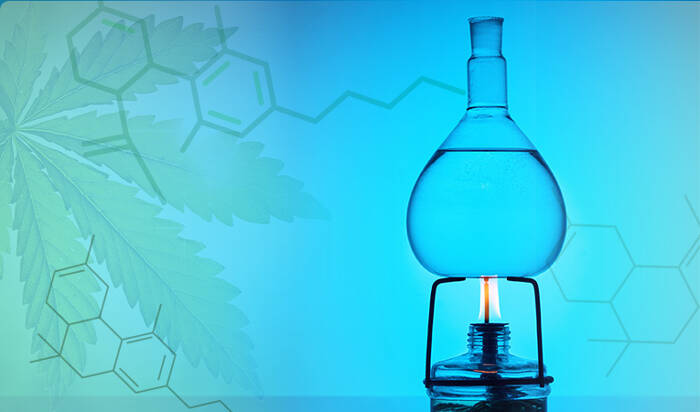CBD & THC Boiling Points
A Shallow Dive into Chemistry
There’s quite a bit of variation in reports of boiling points for either CBD or THC. Why? Probably because of the purity of the test samples.
First, what exactly is a boiling point and how does purity, pressure and other characteristics affect it?
A boiling point is the temperature at which a liquid becomes a gas. Technically, it is also the temperature at which the pressure exerted by a liquid is equal to the pressure on a liquid. This is one reason that the boiling point varies depending on the pressure—on top of a high mountain, for example, the boiling point will be lower because the atmospheric pressure is lower. For most vaping individuals, this won’t make a huge difference, but can make a difference of ~ 0.5o. Another thing to realize is that there can be just a few degrees difference in boiling points of substances which are chemically similar—like cannabinoids, for example. The third thing to realize is that vape oils are mixtures—and in mixtures, substances like cannabinoids will have a lower boiling point than if they were pure. The temperature used for vaping can also affect the flavor of the vape—the substances that give a vape flavor, whether they are added or are the terpenes found in the hemp plant all have different boiling points as well.
Take a look at the structures of CBD and THC—they are quite similar, so the boiling points are relatively close.[1]
| Cannabinoid | Boiling Point as Pure Solid | Boiling Points in oil |
| CBD[2] | 188oC/ 371.3oF | 157.2oC/ 315oF |
| THC [3] | 200oC/ 392oF | 180oC/ 356o F |
Vape Pens with Temperature Settings
Many vape pens with temperature settings are available. Most use three different settings—low, medium, and high temperatures.
High temperature vaping is not recommended—it is not considered safe, and most people report “funky flavors”. This is likely due to the fact that if you are using broad or full spectrum vape oils, these contain hundreds of different compounds…with lower boiling points. If you use high temperatures way above these boiling points, those residues can begin to “char” and leave that funky taste.
Low temperature vaping—usually with the temperature set at 190oC/ 374oF – is the most recommended. Flavors are best at this range and the density of the vapor is relatively thin—and possibly safer for your lungs. Low temperature vaping will provide relatively more CBD. Lower temperatures may also decrease any side effects like dry mouth or fatigue. The terpenes most likely tasted will be α-pinene, β-caryophyllene, β-myrcene, and d-limonene. (piney/citrusy flavors)
Medium temperature vaping—usually with the temperature set at 235oC/ 455oF—can also be used. This will provide a denser (thicker) vapor along with good flavor. Just as a note—medium temperature vaping uses up the vape oils faster and requires a better pen because it uses more energy. Medium temperature vaping will provide more THC as compared to low temperature vaping. The terpenes most likely tasted will be d-limonene, terpinolene, linalool, and humulene for an “earthier” taste.
But….nothing is simple in “CBD world”! You will see different recommendations—and even different values for boiling points for both CBD and THC. This is probably due to several things, including backyard boiling point hobbyists to different strains containing somewhat different constituents (which, as described, can change the boiling points).
Try low and medium temperature vapes and avoid the higher temperatures. We still don’t really know the effects of vaping, after all. A bit of trial and error—and these guidelines—can help you determine the best temperature for vaping for YOU!
References
[1] https://www.ncbi.nlm.nih.gov/pmc/articles/PMC5733806/
[2] https://commonchemistry.cas.org/detail?cas_rn=13956-29-1&search=cannabidiol
[3]https://commonchemistry.cas.org/detail?cas_rn=1972-08-3&search=THC





